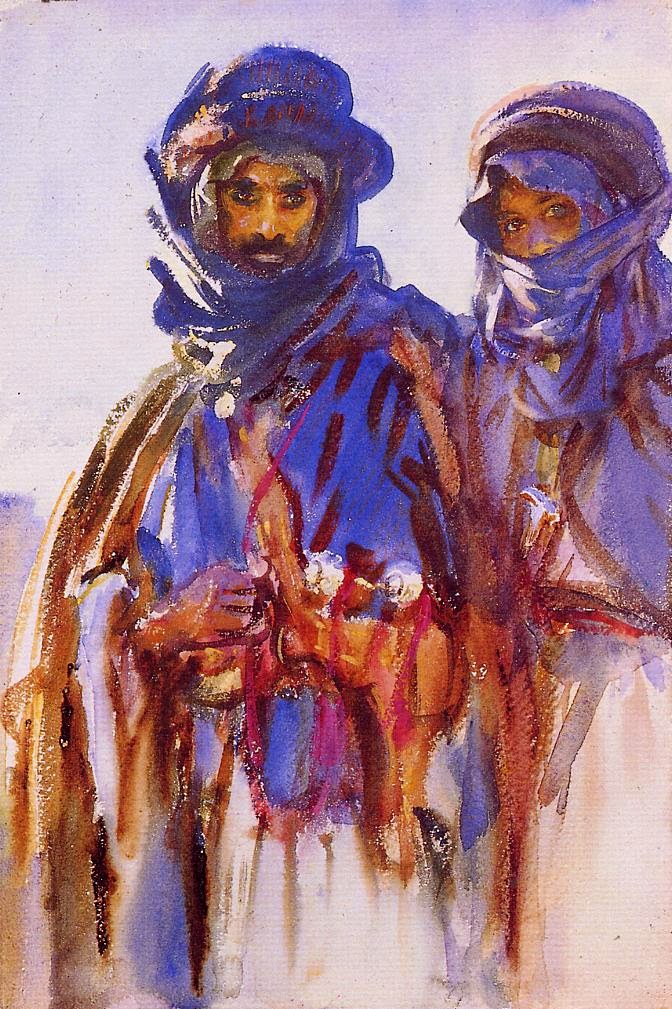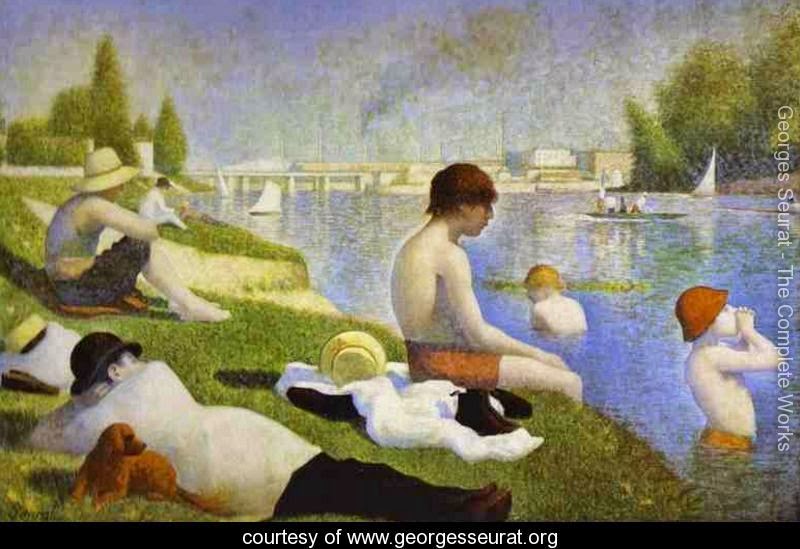 |
| Graffiti Wall with Ayatollah Khomeini and 'Ali Shariati, 1981 |
The Significance of the Veil
The veil, also known as the hijab, has many different meanings for women in the Middle East. Once a girl hits puberty, the wearing of the veil is a subject for personal consideration. Some who wear the veil see it as following God's commandment of being modest and covering their heads to show their devotion. This is a personal choice for them. Others wear the veil as a way to respect their cultural beliefs, showing the outside world they are Muslim and "provide witness of their faith" (Dr. Saher Amer). There are also others who wear the veil to voice their social and political ties to their home country and to protest against the preconceptions of the West. (Dr. Saher Amer).There are also those who choose not to wear the veil, also for religious and cultural purposes. Some women see the veil as drawing attention to themselves, mainly in Western society, which defeats the scripture concerning modesty and not calling attention to oneself. Others feel the veil has taken the focus away from their personal and spiritual relationship to God by becoming the focal point for their Islamic religion. Many women feel wearing the veil is a deeply personal choice and commitment, and this choice has been taken away from them multiple times. The Shah took away their choice to wear it when he came into power by banning its use in public, and Khomeini took away their choice to now wear it by forcing its use.
This post will focus on two Iranian women who grew up in Pre-Revolutionary Iran and show how their artwork voiced the Revolutionary changes they've witnessed during these times and their own personal rebellions against them.
Marjane Satrapi
 |
| Persepolis: A Story of Childhood-The Veil |
Satrapi is related to the Qajar Dynasty, so her family was deeply against Reza Shah's rule. Her grandfather was imprisoned once the Shah came into power. Her parents were in favor of Communism and fought against the Shahs in the Islamic Revolution, however they came to regret this decision once Khomeini began his religious rule. The image on the right shows Satrapi's confusion on the enforcement of the veil after the Revolution when she was a little girl, and how the forcing of wearing the veil correlated with the new religious fervor of Islam being instituted.
 |
| Persepolis 2: A Story of A Return-The Socks, Image 1 |
 |
| Persepolis 2: A Story of A Return-The Socks, Image 2 |
 |
| Persepolis 2: A Story of A Return-The Socks, Image 3 |
Shirin Neshat
 | |
| Women of Allah-Untitled, 1996 |
 |
| Women of Allah-Speechless, 1996 |
Pictured above are two of Neshat's first works of art in her Women of Allah series, Untitled, 1996 and Speechless, 1996. In her series she features poetry from female Persian poets, some of which had been banned by the Islamic Republic. Untitled, 1996 features the poem I Pity the Garden by Forrough Farrokhzad written in Neshat's own handwriting on the fingers of the woman, disregarding the strict dictates of Islamic calligraphy. ("Shirin Neshat: Untitled, moma.org). It reads the first stanza of the poem:
No one is thinking about the flowers
No one is thinking about the fish
No one wants to believe that the garden is dying
that the garden is slowly forgetting its green moments. ("Shirin Neshat: Untitled", moma.org)
In the poem, the garden is seen as a metaphor for a woman. She has her fingers placed before her lips to signify she is speaking, and the poetry painted on her fingers is what she is saying, an effort of a woman to speak in the most un-speakable way; the words she wishes to say are inscribed on her hands. ("Shirin Neshat: Untitled", moma.org)
The poetry of Tahereh Saffarzadeh is written on the face of the next photograph in the series, Speechless, 1996. The muzzle of the gun is placed on the side of the woman's face, inside the viel and next to where her ear is, mimicking a piece of jewelry. The poem is about a woman who pleads with her brothers to join the Revolution. Neshat uses this image to show how the women of Iran were desperately fighting for the right to control their voice and protest.
Conclusion and Aesthetic Response
Both Marjane Satrapi and Shirin Neshat became political activists because of their gender and how they expressed their personal beliefs about their culture and religion through their artistic skills. They were both also exposed to Western culture, and knew the impact it had on their lives and how it changed not only their own perspectives of Iranian religion and culture but also the rest of the world's understanding of it. The veil and the choice to use it became an important aspect of their works because it's strongly tied to their lives and the lives of their people. Satrapi used her graphic art to tell her story and show others how the Revolution impacted her people and her life. The black and white of her drawings contrast sharply with each other. It is a symbolic meaning of how the different sides of opposition in Iran see the political and religious issues being fought over as black or white. You are either for the veil or against it, for democracy or against it, for God or against Him, there is no in-between. Neshat uses the writing on the veiled woman to show the forbidden and unspoken desires within their hearts. The poetry she has chosen has a significant purpose by not only showing the sorrow of the plight of the woman, but also the need for permission from others to decide their fates and their choices.For Marjane Satrapi and Shirin Neshat, it's not about just the veil, but the many choices and freedoms that have been taken away from them. Many countries and nations in the West see the wearing of the veil as a sign of oppression for women. However, women of the East do not share the same view, for it is not that simple. Why did women rise up against the Shahs after they were being granted suffrage and more rights and help fight the Iranian Revolution of 1979? One of the reasons, among many, is because the Shah took away their choice on whether or not they could wear the veil in public, thus preventing them from exercising their religious and cultural freedom.
The West's presence also has had an impact on the revolutions happening in Iran since the 1920s. The United States and Britain heavily influenced the Pahlavi Dynasty's reign, which only further propelled and spread the propaganda used against them during the Revolution by Khomeini and his supporters. Today, the correlation between women's rights, the veil, and the Islamic religion is often misunderstood in Western society. When I first learned about the veil, my understanding of what it symbolized was deeply rooted in my culture. I never thought women would want to wear something that forced them to be submissive and left them powerless, for that is what I understood it to mean. However, as I began to read more about the hijab, I realized it had nothing to do with the actual veil but the choice concerning its use that was being forced upon women.
I first read Persepolis: The Story of a Childhood a few years ago for one of my English classes and it was an emotional and educational read for me. I especially liked how Satrapi told her story in the form of a graphic comic book. I have not read the second book but it is on my future reading list. I admire Neshat and her drive to tell and show the world the real image of Iranian women and their convictions. When I look upon the two photographs from her Women of Allah series, it moves me and makes me appreciate my culture and my right to personal choice. They are both the voice of their people, and without their art the rest of the world will only have the knowledge of Iran and its women obtained by misconception.
Works Cited
Dr. Saher Amer. "Women>Veiling> What is the Hijab and Why do Women Wear it?" arabsinamerica. University of North Caroline-Chapel Hill, n.d. Web. 23 Apr. 2015. http://arabsinamerica.unc.edu/identity/veiling/hijab/Cohen, Roger. "1979: Iran's Islamic Revolution." TheNewYorkTimes: Upfront. Scholastic, 2015. Web. 23 Apr. 2015. http://teacher.scholastic.com/scholasticnews/indepth/upfront/features/index.asp?article=f091806_TP_Iran.
"Graffiti Wall with Ayatollah Khomeini and 'Ali Shariati." University of Chicago. University of Chicago Library, n.d. Web. 23 Apr. 2015. https://www.lib.uchicago.edu/e/webexhibits/iranianposters/revolution.html.
"Qajar Dynasty." Wikipedia. Wikimedia Foundation, 23 Apr. 2015. Web. 23 Apr. 2015. http://en.wikipedia.org/wiki/Qajar_dynasty.
"Marjane Satrapi." Wikipedia. Wikimedia Foundation, 8 Apr. 2015, Web. 23 Apr. 2015. http://en.wikipedia.org/wiki/Marjane_Satrapi
"Pahlavi Dynasty." Wikipedia. Wikimedia Foundation, 28 Mar. 2015. Web. 23 Apr. 2015. http://en.wikipedia.org/wiki/Pahlavi_dynasty.
"Persepolis: A Story of A Childhood-The Veil." cbldf.org. Comic Book Legal Defense Fund, 2015. Web. 23 Apr. 2015. http://cbldf.org/wp-content/uploads/2013/06/persepolis.jpg
"Persepolis 2: A Story of A Return-The Socks (Images 1 and 2)." sacredchaos.com. Sacred Chaos, n.d. Web. 23 Apr. 2015. http://www.sacredchaos.com/readings/reviews/satrapi_persepolis_2.html
"Persepolis 2: A Story of A Return-The Socks (Image 3)." orble.com. On Topic Media, 2 Nov. 2010. Web. 23 Apr. 2015. http://www.orble.com/persepolis-2007-marjane-satrapi/
"Persian Constitutional Revolution." Wikipedia. Wikimedia Foundation, 21 Feb. 2015. Web. 23 Apr. 2015. http://en.wikipedia.org/wiki/Persian_Constitutional_Revolution.
"Shirin Neshat: Art in Exile." ted.com. Ted Conferences, Dec. 2010. Web. 23 Apr. 2015. http://www.ted.com/talks/shirin_neshat_art_in_exile#t-492465.
"Shirin Neshat." Wikipedia. Wikimedia Foundation, 9 Mar. 2015. Web. 23 Apr. 2015. http://en.wikipedia.org/wiki/Shirin_Neshat.
"Shirin Neshat: Speechless, 1996." moma.org. MoMa Mutlimedia, n.d. Web. 23 Apr. 2015. http://www.moma.org/explore/multimedia/audios/27/652.
"Shirin Neshat: Untitled, 1996." moma.org. MoMa Multimedia, n.d. Web. 23 Apr. 2015. http://www.moma.org/explore/multimedia/audios/27/653.
"Speechless, 1996." gladstonegallery.com. Gladstone Gallery n.d. Web. 23 Apr. 2015. http://www.gladstonegallery.com/artist/shirin-neshat/work#&panel1-4.
"Untitled, 1996." gladstonegallery.com. Gladstone Gallery, n.d. Web. 23 Apr. 2015. http://www.gladstonegallery.com/artist/shirin-neshat/work#&panel1-8.
"Women's rights in Iran." Wikipedia. Wikimedia Foundation, 10 Apr. 2015. Web. 23 Apr. 2015. http://en.wikipedia.org/wiki/Women%27s_rights_in_Iran.

%2B2004_38x72.jpg)









_-_Gassed_-_Google_Art_Project.jpg)




















